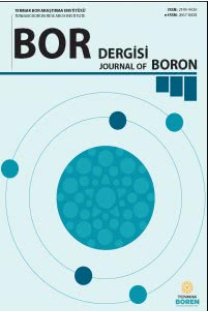AA2014 - B4C MMK’nın Döküm ve Döküm + 600 °C’de 2 saat Sinterleme Sonrası Aşınma Davranışlarının İncelenmesi
Bu çalışmada, döküm yöntemi ve döküm sonrası 600°C’de 2 saat sinterleme uygulanarak, %10/20 B4 C takviyeli ve AA2014 matris yapılı kompozit malzemeler üretilmiştir. Döküm yöntemi ile üretilen numunelere, sinterleme ve takviye oranlarının aşınma davranışlarına etkileri incelenmiştir. Çalışmada mikroyapı incelemeleri amaçlı; Taramalı elektron mikroskobu (SEM), Element Dağılım Spektrometresi (EDS) ve X-Ray incelemeleri yapılmıştır. Sertlik sonuçları için HV1 yöntemi ile makro sertlik verileri alınmıştır. Aşınma işlemi için pin-on-disk tipi kuru aşınma cihazında, 0.5MPa basınç altında, 1 ms-1 kayma hızında ve dört farklı kayma mesafesindeki veriler kullanılmıştır. Artan B4 C takviye oranı ve sinterleme işlemleri sonrasında sertlik artmış, sürtünme katsayısı düşmüş ve aşınma kaybı azalmıştır. En düşük sürtünme katsayısı ve aşınma kaybı 600 °C’de 2 saat sinterlenen %20 B4 C içeren numunede elde edilmiştir.
Anahtar Kelimeler:
Abrasiv Aşınma, AA2014/B4 C MMK, Sinterleme etkisi
Effects of the AA2014/B4 C MMCs production with casting and post casting sintering operations on wear behaviors
In the study, AA2014 matrix and 10/20% B4 C reinforced composites structure have been produced by casting and casting + sintering processes (at 600 °C for 2 hours). The effects of sintering and reinforcement ratios on wear behavior of specimens have been investigated after casting. For investigation of the microstructure studies; Scanning Electron Microscopy (SEM), Element Distribution Spectrometer (EDS) and X-ray studies have been performed. Macro hardness data have been obtained by HV1 method. For wear tests, pin-on-disc type dry abrasion device has been used at a pressure of 0.5 MPa, a sliding speed of 1 ms-1 and at four different slip distances. After sintering and increasing the B4 C reinforcement ratio, the hardness values increased, the friction coefficient decreased and the wear loss decreased. The lowest coefficient of friction and loss of wear have been obtained with the sample containing of 20% B4C sintered at 600 °C for 2 hours.
Keywords:
Abrasive Wear, AA2014/B4C MMK, Sintering effect,
___
- Referans1 Canakci A., Arslan F., Yasar İ., Pre-treatment process of B4C particles to improve incorporation into molten AA2014 alloy, J Mater Sci., 42:9536–9542, 2007.
- Referans2 Özer A., The microstructures and mechanical properties of Al-15Si-2.5Cu-0.5Mg/(wt%)B4C composites produced through hot pressing technique and subjected to hot extrusion, Materials Chemistry and Physics, 183 : 288-296, 2016.
- Referans3 Demir Ü., Güral A., Öztürk M.K., Eşit kanallı açısal preslenmiş toz halde Al-%5Ni alaşımının mikro yapısal karakterizasyonu, Journal of the Faculty of Engineering and Architecture of Gazi University, 32 (3), 685-692, 2017.
- Referans4 Ovali I., Karakoç H., Çinici H., Optimization of the wear resistance of AA2024 matrix composites fabricated with hot pressing, Journal of Achievements in Materials and Manufacturing Engineering, 79 (1), 19-23, 2016.
- Referans5 Taşkesen A., Aksöz S., Özdemir A. T., The effect of cryogenic treatment on ageing behaviour of B4C reinforced 7075 aluminium composites, Kovove Mater., 55: 57–67, 2017.
- Referans6 Aksöz S., Bican O., Çalın R., Bostan B., Effect of T7 heat treatment on the dry sliding friction and wear properties of the SiC-reinforced AA 2014 aluminium matrix composites produced by vacuum infiltration, Proc IMechE Part J: J Engineering Tribology, 228 (3), 312–319, 2014.
- Referans7 Aksöz S., Özdemir A.T., Çalın R., Altınok Z. , Bostan B., “ Sinterleme, Yaşlandırma ve Kriyojenik Isıl İşlemlerinin AA2014-B4C Kompozit Yapısına ve Mekanik Özelliklerine Etkileri”, Journal of the Faculty of Engineering and Architecture of Gazi University, 28 (4), 831-839, 2013.
- Referans8 Varol T., Canakci A., Synthesis and characterization of nanocrystalline Al 2024– B4C composite powders by mechanical alloying, Philosophical Magazine Letters, 93 (6,) 339–345, 2013.
- Referans9 Canakci A., Ozsahin S., Varol T., Prediction of Effect of Reinforcement Size and Volume Fraction on the AbrasiveWear Behavior of AA2014/B4Cp MMCs Using Artificial Neural Network, Arab J Sci Eng., 39 : 6351–6361, 2014.
- Referans10 Kerti I., Toptan F., Microstructural variations in cast B4C-reinforced aluminium matrix composites (AMCs), Mater Lett., 62 : 1215-1218, 2008.
- Referans11 Deuis R. L., Subramanian C., Yellup J. M., Abrasive wear of aluminium composites - a review, Wear, 20 : 132–144, 1996.
- Referans12 Waterloo G., Hansen V., Gjønnes J., Skjervold S.R., Effect of predeformation and preaging at room temperature in Al–Zn–Mg–(Cu, Zr) alloys, Mater. Sci. Eng. A, 303 : 226–233, 2001.
- Referans13 Yılmaz R., Özyürek D., Kibar E., The effect of retrogression parameters on hardness and wear behaviors of 7075 aluminum alloys, Journal of the Faculty of Engineering and Architecture of Gazi University, 27 (2), 429-438, 2012.
- Referans14 Qi W.X., Tu J. P., Liu F., Yang Y. Z., Wang N. Y., H. Lu M., Zhang X. B., Guo S. Y., Liu M. S., “Microstructure and tribological behavior of a peak aged Cu-Cr-Zr alloy”, Materials Science and Engineering A, 343 (1), 89-96, 2003.
- Referans15 Tu J. P., Meng L. and Liu M. S., “Friction and wear behavior of Cu-Fe3Al powder metallurgical composites in dry sliding”, Wear, 220 (1), 72-79, 1998.
- Referans16 Saka N., Eleiche A. M. and Suh N. P., Wear of metals at high sliding speeds, Wear, 44 (1), 109-125, 2003.
- ISSN: 2149-9020
- Yayın Aralığı: Yılda 4 Sayı
- Başlangıç: 2016
- Yayıncı: TENMAK Bor Araştırma Enstitüsü
Sayıdaki Diğer Makaleler
Potential for using borate mixtures as groundline preservative pastes
Selim UYSAL, Jed CAPPELLAZZİ, Jeffrey J. MORRELL
Ahmet YARTAŞI, Tuba Hatice DOĞAN
The nanobiocomposites synthesis from biomass and its characterization
Nuran AY, Emir Zafer HOŞGÜN, Berrin BOZAN, Yapıncak GÖNCÜ
Experimental and DFT calculation studies on boric acid and salicylic acidboric acid-ethanol solution
Tuba ÖZDEMİR ÖGE, Ali Ünsal KESKİNER
Yapıncak Göncü, Emir Zafer Hoşgün, Nuran AY, Berrin Bozan
Bilge Yaman, Nurcan Çalış Açıkbaş
Tuba Hatice DOĞAN, Ahmet YARTAŞI
